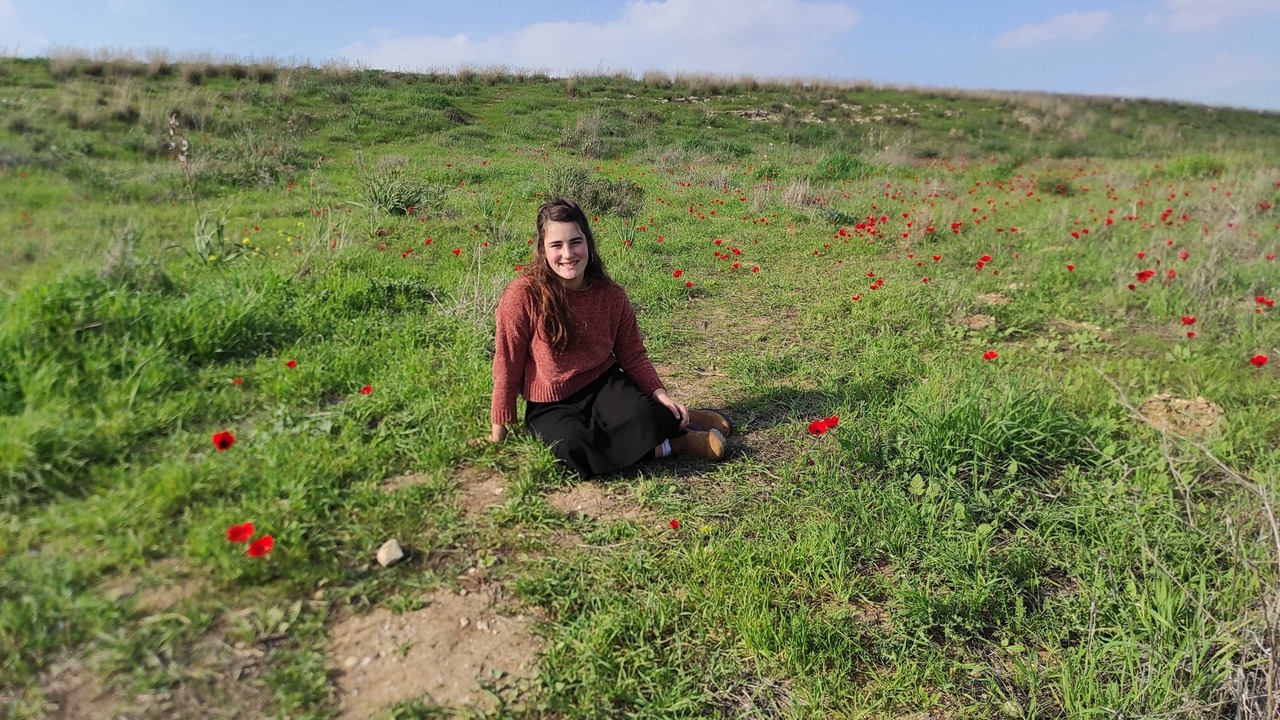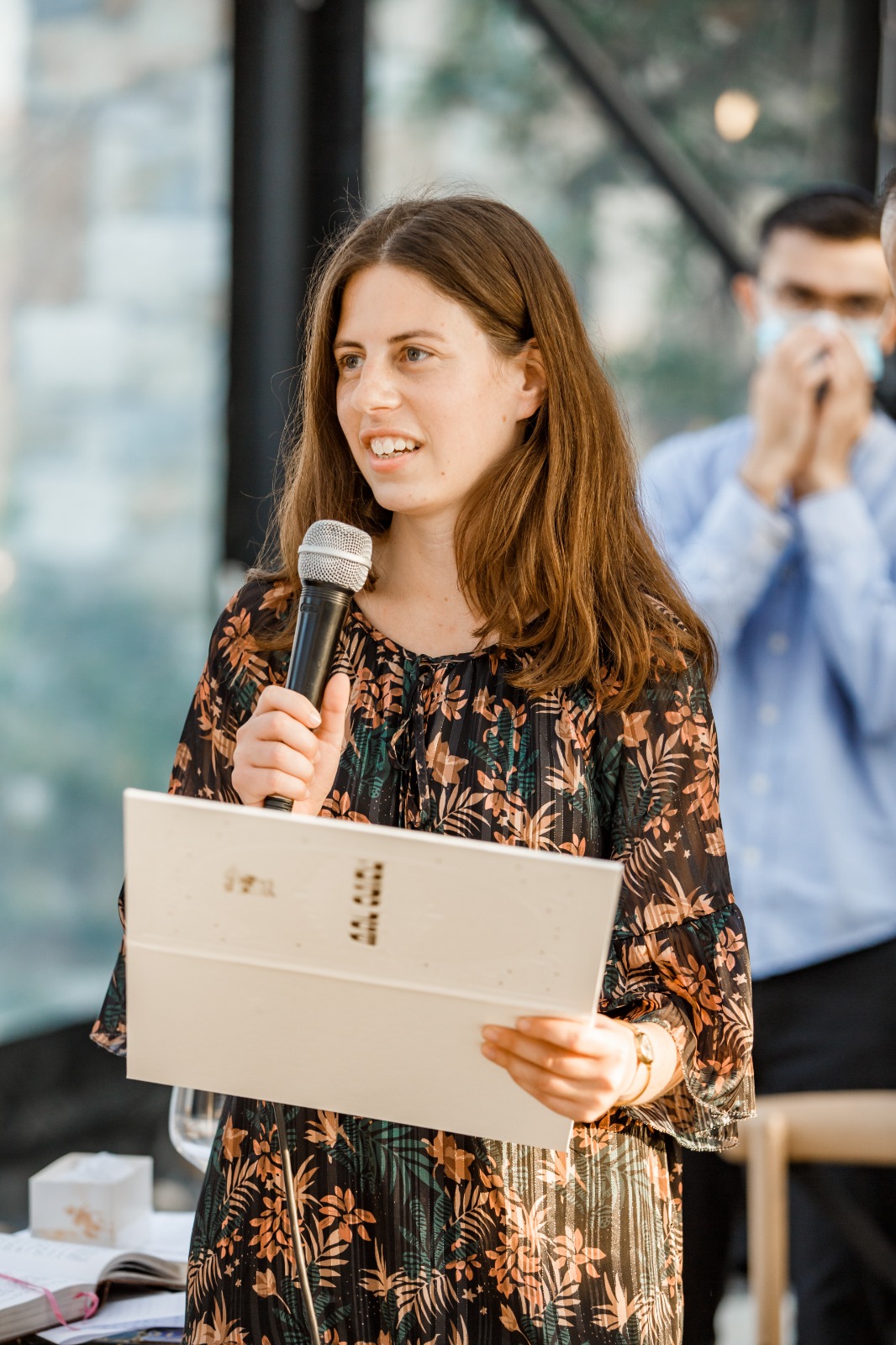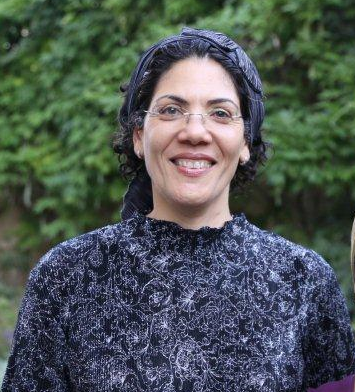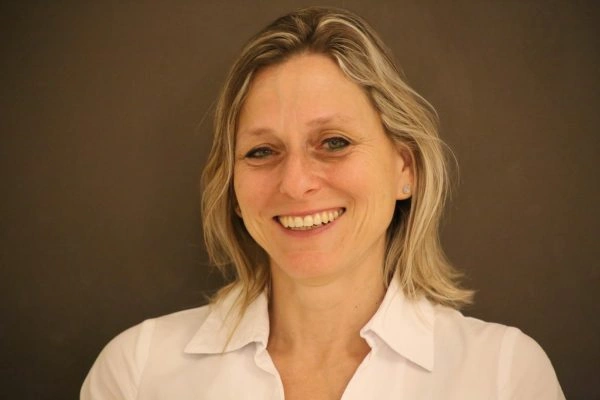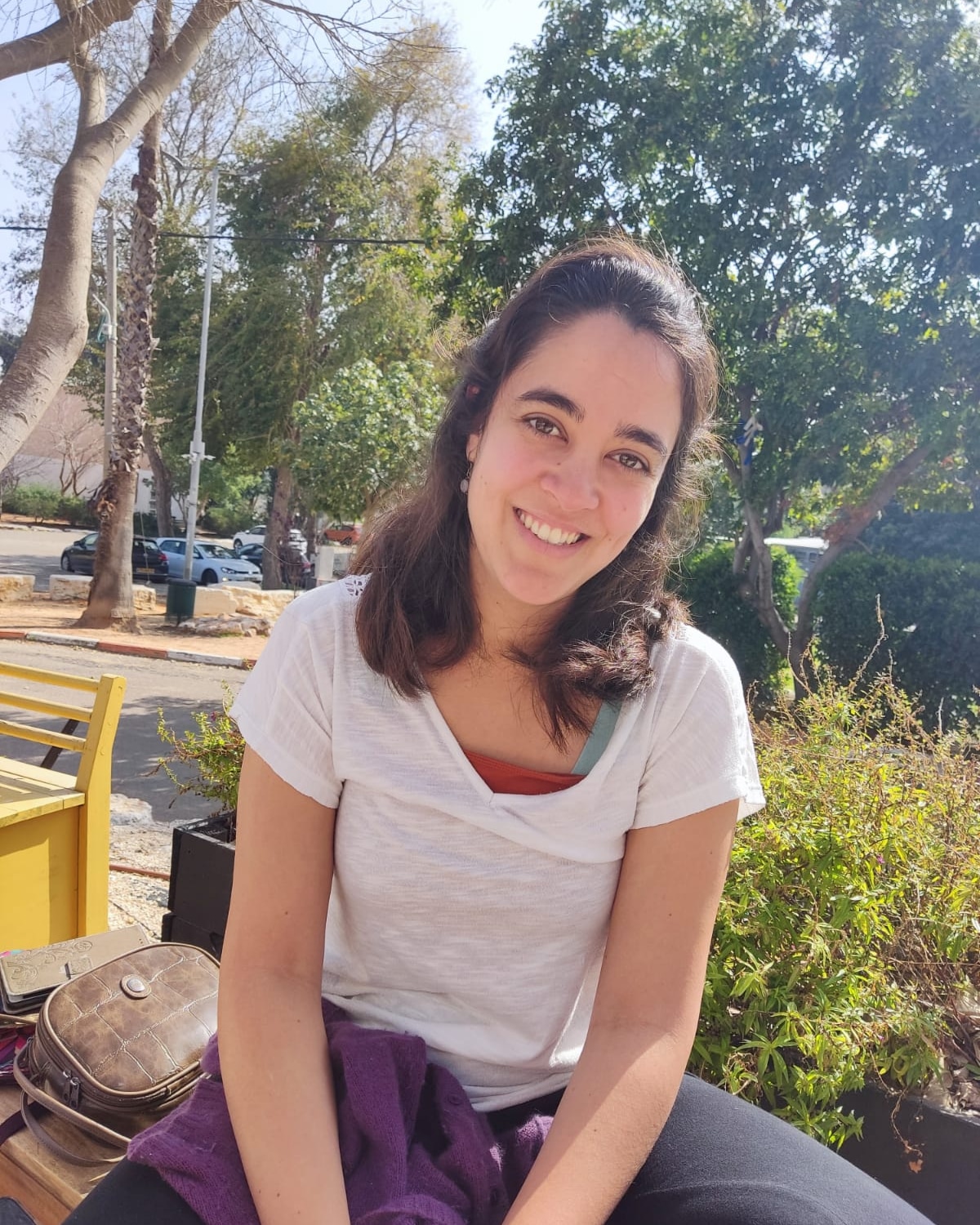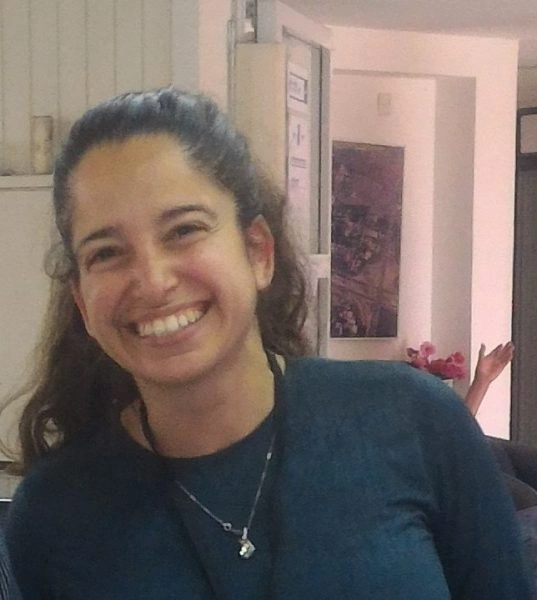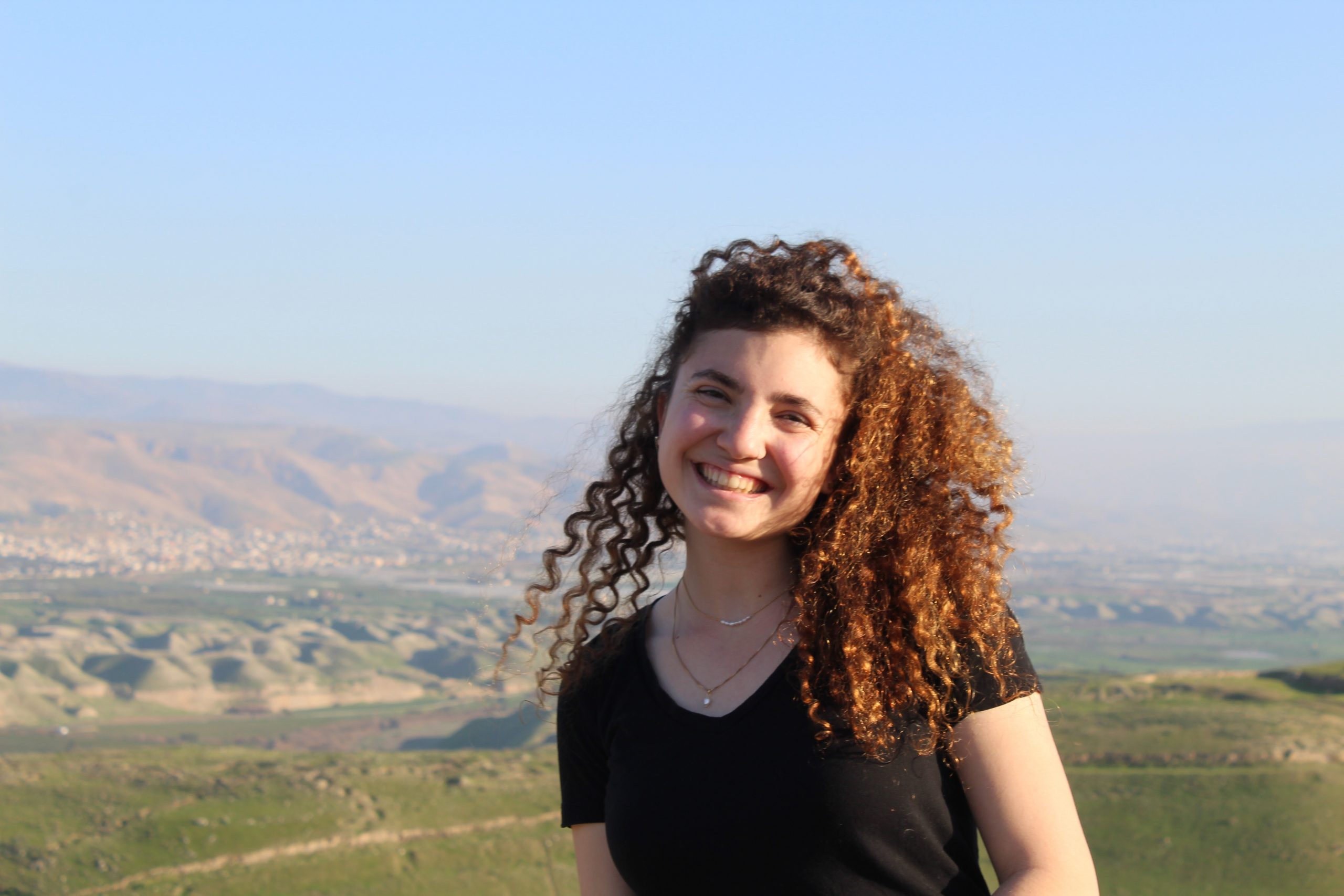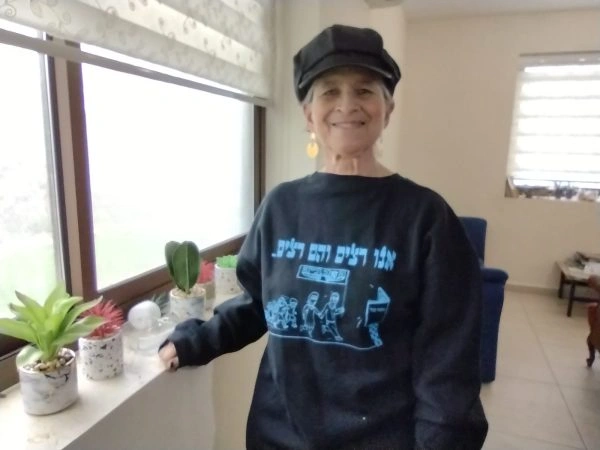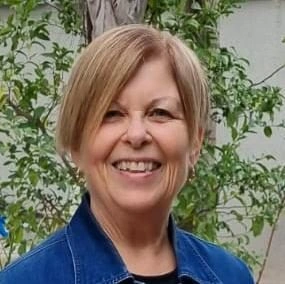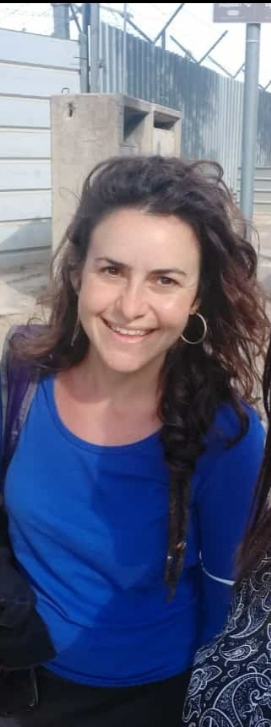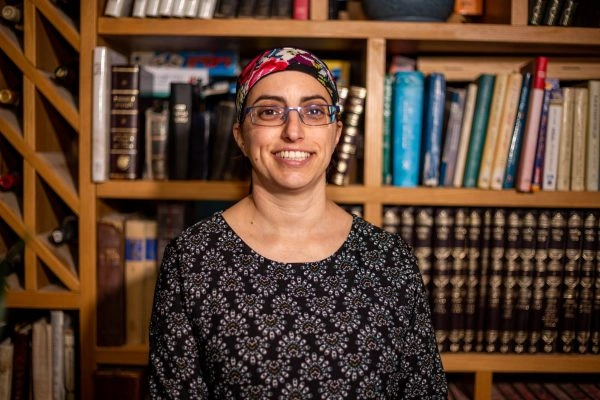איש אינו רשאי לשהות במקדש בזמן שהכהן הגדול נכנס לקודש הקודשים. האם זה רק כשהוא מקטיר את הקטורת או גם כשהוא זורק את הדם בקודש הקודשים? רבי אלעזר מבחין בין ההפרשה במהלך הקרבת הקטורת מדי יום (אף אחד לא יכול להיות בהיכל או באזור שבין האולם למזבח) לבין הקטרת הקטורת ביום הכיפורים (צריך להפריש רק מההיכל). הגמרא מביאה ברייתא שמבחינה בין ההפרשה מאזורים אלו אבל בפעולות אחרות ולא בין הקטורת שבהיכל ובין קודש הקודשים. איך פותרים את הסתירה? האם ניתן להסיק דברים אחרים מברייתא זו בנוגע להבדל בין דרגות קדושה בבית המקדש? מדוע שימשו בשתי מחתות לקטורת ביום רגיל? ולמה לא ביום כיפור?
רוצה להקדיש לימוד?
חדשה בלימוד הגמרא?
זה הדף הראשון שלך? איזו התרגשות עצומה! יש לנו בדיוק את התכנים והכלים שיעזרו לך לעשות את הצעדים הראשונים ללמידה בקצב וברמה שלך, כך תוכלי להרגיש בנוח גם בתוך הסוגיות המורכבות ומאתגרות.
פסיפס הלומדות שלנו
גלי את קהילת הלומדות שלנו, מגוון נשים, רקעים וסיפורים. כולן חלק מתנועה ומסע מרגש ועוצמתי.
יומא מד
יָכוֹל אֲפִילּוּ בַּעֲזָרָה — תַּלְמוּד לוֹמַר: ״בְּאֹהֶל מוֹעֵד״. אֵין לִי אֶלָּא בְּאֹהֶל מוֹעֵד שֶׁבַּמִּדְבָּר, שִׁילֹה וּבֵית עוֹלָמִים מִנַּיִן? תַּלְמוּד לוֹמַר: ״בַּקּוֹדֶשׁ״.
I might have thought nobody should be present, even in the Temple courtyard. Therefore, the verse states “in the Tent of Meeting,” limiting the prohibition to the Temple itself. I have derived only that a prohibition exists in the Tent of Meeting of the Tabernacle that was in the desert, from where do I derive that the prohibition applies also to the Tabernacle that stood in Shiloh, and that it applies also to the Eternal House, i.e., the Temple in Jerusalem? The verse states “in the Sanctuary,” indicating that the prohibition applies to any Sanctuary.
אֵין לִי אֶלָּא בִּשְׁעַת הַקְטָרָה, בִּשְׁעַת מַתַּן דָּמִים מִנַּיִן? תַּלְמוּד לוֹמַר: ״בְּבוֹאוֹ לְכַפֵּר״. אֵין לִי אֶלָּא בִּכְנִיסָתוֹ, בִּיצִיאָתוֹ מִנַּיִן? תַּלְמוּד לוֹמַר: ״עַד צֵאתוֹ״.
I have derived only that a prohibition exists during the burning of the incense; from where do I derive that the prohibition applies also during the presentations of the bull’s blood in the Holy of Holies? The verse states: “When he goes in to make atonement,” and atonement is achieved through the presentations of blood. I have derived only that a prohibition exists from the time of his entrance into the Holy of Holies; from where is it derived that the prohibition remains in force until his exit? The verse states: “Until he comes out.”
״וְכִפֶּר בַּעֲדוֹ וּבְעַד בֵּיתוֹ וּבְעַד כׇּל קְהַל יִשְׂרָאֵל״, כַּפָּרָתוֹ קוֹדֶמֶת לְכַפָּרַת בֵּיתוֹ, כַּפָּרַת בֵּיתוֹ קוֹדֶמֶת לְכַפָּרַת אֶחָיו הַכֹּהֲנִים, וְכַפָּרַת אֶחָיו הַכֹּהֲנִים קוֹדֶמֶת לְכַפָּרַת כׇּל קְהַל יִשְׂרָאֵל.
The baraita concludes by expounding the final part of the verse: “And have made atonement for himself, and for his household, and for all the assembly of Israel” (Leviticus 16:17). This teaches that his atonement precedes the atonement of his household; the atonement of his household precedes that atonement of his brethren, the priests; the atonement of his brethren, the priests, precedes the atonement of the entire community of Israel.
אָמַר מָר: אֵין לִי אֶלָּא בִּשְׁעַת הַקְטָרָה. מַאי מַשְׁמַע? אָמַר רָבָא, וְכֵן אָמַר רַבִּי יִצְחָק בַּר אַבְדִּימִי, וְכֵן אָמַר רַבִּי אֶלְעָזָר, אָמַר קְרָא: ״וְכִפֶּר בַּעֲדוֹ וּבְעַד בֵּיתוֹ וּבְעַד כׇּל קְהַל יִשְׂרָאֵל״, אֵיזֶהוּ כַּפָּרָה שֶׁשָּׁוָה לוֹ וּלְבֵיתוֹ וּלְאֶחָיו הַכֹּהֲנִים וּלְכׇל קְהַל יִשְׂרָאֵל — הֱוֵי אוֹמֵר זֶה הַקְטָרַת הַקְּטוֹרֶת.
The Gemara analyzes the baraita: The Master said in the baraita: I have derived only that a prohibition exists during the burning of the incense. From where in the verse could this have been inferred? Rava said, and similarly Rabbi Yitzḥak bar Avdimi said, and similarly Rabbi Elazar said: The conclusion of that verse states: “And have made atonement for himself, and for his household, and for all the assembly of Israel.” Which act of atonement is the same for him, and for his household, and for his brethren, the priests, and for the entire community of Israel? You must say this is the burning of the incense.
וּקְטוֹרֶת מְכַפֶּרֶת? אִין, דְּהָא תָּנֵי רַבִּי חֲנַנְיָא: לָמַדְנוּ לִקְטוֹרֶת שֶׁמְּכַפֶּרֶת, שֶׁנֶּאֱמַר: ״וַיִּתֵּן אֶת הַקְּטוֹרֶת וַיְכַפֵּר עַל הָעָם״, וְתָנָא דְּבֵי רַבִּי יִשְׁמָעֵאל: עַל מָה קְטוֹרֶת מְכַפֶּרֶת — עַל לָשׁוֹן הָרָע. יָבֹא דָּבָר שֶׁבַּחֲשַׁאי, וִיכַפֵּר עַל מַעֲשֵׂה חֲשַׁאי.
Does incense effect atonement? The Torah mentions the concept of atonement only with regard to offerings. Yes, as Rabbi Ḥananya teaches in a baraita: We learned of the incense that it effects atonement, as it is stated: “And he put on the incense and made atonement for the people” (Numbers 17:12). And the school of Rabbi Yishmael taught: For what does incense effect atonement? For slander. And why is that? Let something that is done in secret, i.e., the incense, which is burned in seclusion within the Sanctuary, come and effect atonement for an act done in secret, i.e., slander, which is generally said in private.
תְּנַן הָתָם: פּוֹרְשִׁין מִבֵּין הָאוּלָם וְלַמִּזְבֵּחַ בִּשְׁעַת הַקְטָרָה. אָמַר רַבִּי אֶלְעָזָר: לֹא שָׁנוּ אֶלָּא בִּשְׁעַת הַקְטָרָה דְּהֵיכָל, אֲבָל בִּשְׁעַת הַקְטָרָה דְּלִפְנַי לִפְנִים — מֵהֵיכָל פָּרְשִׁי, מִבֵּין הָאוּלָם וְלַמִּזְבֵּחַ לָא פָּרְשִׁי.
We learned in a mishna there: They remove themselves from the area between the Entrance Hall and the altar during the burning of the incense. Rabbi Elazar said: They taught that this is true only during the burning of the incense of the Sanctuary, but during the burning of the incense in the innermost chamber, i.e., the Holy of Holies, people are required to remove themselves only from the Sanctuary. They do not need to remove themselves from the area between the Entrance Hall and the altar.
מֵתִיב רַב אַדָּא בַּר אַהֲבָה, וְאָמְרִי לַהּ כְּדִי, רַבִּי יוֹסֵי אוֹמֵר: כְּשֵׁם שֶׁפּוֹרְשִׁין מִבֵּין הָאוּלָם וְלַמִּזְבֵּחַ בִּשְׁעַת הַקְטָרָה, כָּךְ פּוֹרְשִׁין בִּשְׁעַת מַתַּן פַּר כֹּהֵן מָשִׁיחַ וּפַר הֶעְלֵם דָּבָר שֶׁל צִיבּוּר וּשְׂעִירֵי עֲבוֹדָה זָרָה.
Rav Adda bar Ahava raised an objection to Rabbi Elazar’s opinion from a baraita, and some say it unattributed: Rabbi Yosei says: Just as they remove themselves from the area between the Entrance Hall and the altar during the burning of the incense, they similarly remove themselves during the blood presentations of the bull of the anointed priest, i.e., of the High Priest, which he brings if he issues an erroneous halakhic ruling and acts upon it; and also during the blood presentations of the bull for an unwitting communal sin brought if the Sanhedrin issues an erroneous halakhic ruling and the community acts upon it; and also during the blood presentations of the goats of idol worship brought for an inadvertent communal transgression of idol worship.
הָא מָה מַעֲלָה יֵשׁ בֵּין הַהֵיכָל לְבֵין הָאוּלָם וְלַמִּזְבֵּחַ? אֶלָּא, שֶׁבַּהֵיכָל פּוֹרְשִׁין בֵּין בִּשְׁעַת הַקְטָרָה וּבֵין שֶׁלֹּא בִּשְׁעַת הַקְטָרָה, וּמִבֵּין הָאוּלָם וְלַמִּזְבֵּחַ אֵין פּוֹרְשִׁין אֶלָּא בִּשְׁעַת הַקְטָרָה.
The baraita continues: If so, what higher standard is applicable to the Sanctuary relative to the area between the Entrance Hall and the altar? Only that those in the Sanctuary remove themselves both during the incense burning and also during the blood presentations, which is not during the incense burning. Those who are in the area between the Entrance Hall and the altar remove themselves only during the incense burning but not during the blood presentations.
בִּשְׁעַת הַקְטָרָה מִיהָא פָּרְשִׁי. מַאי לָאו, בִּשְׁעַת הַקְטָרָה דְּלִפְנַי לִפְנִים?
The Gemara explains the challenge: In any case, it is evident from the baraita that during the incense burning they do remove themselves. What, is it not referring to during the burning of the incense of the innermost chamber, i.e., the Holy of Holies? This would contradict Rabbi Elazar’s opinion.
לָא, בִּשְׁעַת הַקְטָרָה דְּהֵיכָל. אִי הָכִי, הָא ״מָה מַעֲלָה״ וְתוּ לָא, הָא אִיכָּא הָא מַעֲלָה: דְּאִילּוּ מֵהֵיכָל פָּרְשִׁי בֵּין בִּשְׁעַת הַקְטָרָה דִידֵיהּ, בֵּין בִּשְׁעַת הַקְטָרָה דְּלִפְנַי לִפְנִים, וְאִילּוּ מִבֵּין הָאוּלָם וְלַמִּזְבֵּחַ לָא פָּרְשִׁי אֶלָּא בִּשְׁעַת הַקְטָרָה דְהֵיכָל!
The Gemara defends his opinion: No, it is referring to during the burning of the incense of the Sanctuary. The Gemara asks: If so, how can the baraita say: What higher standard is applicable to the Sanctuary? This implies that it is superior only with respect to one higher standard. Are there not more? Surely, there is this higher standard, that whereas the people in the Sanctuary remove themselves both during its own, i.e., the Sanctuary’s, incense burning and during the incense burning of the innermost chamber, i.e., the Holy of Holies, but in the area between the Entrance Hall and the altar they remove themselves only during the burning of the incense of the Sanctuary.
הָא קָתָנֵי: אֶלָּא שֶׁבַּהֵיכָל פּוֹרְשִׁין בֵּין בִּשְׁעַת הַקְטָרָה וּבֵין שֶׁלֹּא בִּשְׁעַת הַקְטָרָה, וּמִבֵּין הָאוּלָם וְלַמִּזְבֵּחַ אֵין פּוֹרְשִׁין
The Gemara explains: This is in fact what the baraita is teaching: It is teaching only that those in the Sanctuary remove themselves both during the burning of the incense and also during the blood presentations, which is not during the burning of the incense; from the area between the Entrance Hall and the altar they do not remove themselves,
אֶלָּא בִּשְׁעַת הַקְטָרָה.
except during the burning of the incense.
וְהָא אִיכָּא הָא מַעֲלָה, דְּאִילּוּ מֵהֵיכָל פָּרְשִׁי בֵּין בִּקְדוּשָּׁה דִידֵיהּ, בֵּין בִּקְדוּשָּׁה דְּלִפְנַי וְלִפְנִים, וְאִילּוּ מִבֵּין הָאוּלָם וְלַמִּזְבֵּחַ לָא פָּרְשִׁי אֶלָּא בִּקְדוּשָּׁה דְהֵיכָל! אָמַר רָבָא: שֵׁם פְּרִישָׁה אַחַת הִיא.
But there is also this higher standard, that whereas from the Sanctuary they remove themselves both during its own sanctification, i.e., the blood presentations in the Sanctuary, and during the sanctification of the innermost chamber, i.e., the Holy of Holies, but from the area between the Entrance Hall and the altar, they remove themselves only during the sanctification of the Sanctuary. Rava said: Indeed, there are numerous distinctions, but the baraita teaches only one because all the distinctions fit into one category of removal.
אָמַר מָר: כָּךְ פּוֹרְשִׁין בִּשְׁעַת מַתַּן פַּר כֹּהֵן מָשִׁיחַ, וּפַר הֶעְלֵם דָּבָר שֶׁל צִבּוּר, וּשְׂעִירֵי עֲבוֹדָה זָרָה. מְנָא לַן? אָמַר רַבִּי פְּדָת: אָתְיָא ״כַּפָּרָה״ ״כַּפָּרָה״ מִיּוֹם הַכִּפּוּרִים.
The Gemara continues to analyze the baraita: The Master said in the baraita: Just as they remove themselves from the area between the Entrance Hall and the altar during the burning of the incense, they similarly remove themselves during the blood presentations of the bull of the anointed priest; of the bull for an unwitting communal sin; and of the goats of idol worship. From where do we derive this? Rabbi Pedat said: It is derived by a verbal analogy between the word atonement said in connection with those offerings and the word atonement from the prohibition on Yom Kippur.
אָמַר רַב אַחָא בַּר אַהֲבָה, שְׁמַע מִינַּהּ: מַעֲלוֹת דְּאוֹרָיְיתָא, וְהָכִי גְּמִירִי לְהוּ.
Rav Aḥa bar Ahava said: Learn from this that there is a prohibition in the area between the Entrance Hall and the altar. The higher standards applied to the various areas in the Temple are defined by Torah law, and the Sages learned them as a tradition.
דְּאִי סָלְקָא דַעְתָּךְ דְּרַבָּנַן, מַאי שְׁנָא בֵּין הָאוּלָם וְלַמִּזְבֵּחַ? דִּילְמָא מִיקְּרוּ וְעָיְילִי — מִכּוּלַּהּ עֲזָרָה נָמֵי נִפְרְשׁוּ, דִּילְמָא מִיקְּרוּ וְעָיְילִי!
As if it could enter your mind that these standards are defined by rabbinic law, what is different about the area between the Entrance Hall and the altar that the prohibition applies only there? Perhaps other priests would accidentally happen to enter the Sanctuary while incense is burning there. But if that is the reason, then the rabbinic decree should require that they remove themselves also from the entire Temple courtyard, since perhaps they would accidentally happen to enter. The fact that the prohibition does not extend to the Temple courtyard suggests that the standards are defined by Torah law.
בֵּין הָאוּלָם וְלַמִּזְבֵּחַ, כֵּיוָן דְּלָא מַפְסֵיק מִידֵּי — לָא מִינַּכְרָא מִילְּתָא. עֲזָרָה, כֵּיוָן דְּאִיכָּא מִזְבֵּחַ הַחִיצוֹן דְּמַפְסֵיק — מִינַּכְרָא מִילְּתָא.
The Gemara rejects Rav Aḥa bar Ahava’s reasoning: The prohibition could indeed be rabbinic. Nevertheless, it is reasonable to limit it to the area between the Entrance Hall and the altar, as follows: Since there is nothing that separates it from the Sanctuary, the distinction between the two areas is not conspicuous, and therefore people may err and enter. But with regard to the Temple courtyard, since there is the outer altar that separates the rest of the Temple courtyard from the Sanctuary, the distinction between the areas is conspicuous, and therefore there is no need to extend the prohibition throughout the Temple courtyard.
אָמַר רָבָא, שְׁמַע מִינַּהּ: קְדוּשַּׁת אוּלָם וְהֵיכָל חֲדָא מִילְּתָא הִיא. דְּאִי סָלְקָא דַּעְתָּךְ שְׁתֵּי קְדוּשּׁוֹת נִינְהוּ, אוּלָם גּוּפֵיהּ גְּזֵירָה, וְנֵיקוּם וְנִגְזוֹר גְּזֵירָה לִגְזֵירָה?!
Rava said: Learn from this fact that there is a rabbinic prohibition in the area between the Entrance Hall and the altar. The sanctity of the Entrance Hall and the sanctity of the Sanctuary is one matter, i.e., there they share the same sanctity, and therefore the Torah prohibition applies to the Entrance Hall as well. For if it could enter your mind to say that these areas have two distinct levels of sanctity, it would emerge that the prohibition to be in the Entrance Hall is itself a rabbinic decree. But will we arise and issue one decree to prevent violation of another decree by prohibiting being present in the area between the Entrance Hall and the altar, lest one enter the Entrance Hall itself?
לָא, אוּלָם וּבֵין הָאוּלָם וְלַמִּזְבֵּחַ חֲדָא קְדוּשָּׁה הִיא, הֵיכָל וְאוּלָם שְׁתֵּי קְדוּשּׁוֹת.
The Gemara rejects Rava’s reasoning: No, this would not be a case of issuing one decree to prevent violation of another decree, because the Entrance Hall and the area between the Entrance Hall and the altar share one sanctity. Consequently, any prohibition applied to one will certainly also apply to the other. However, the Sanctuary and the Entrance Hall have two distinct sanctities.
בְּכׇל יוֹם הָיָה חוֹתֶה בְּשֶׁל כֶּסֶף וְכוּ׳. מַאי טַעְמָא? הַתּוֹרָה חָסָה עַל מָמוֹנָן שֶׁל יִשְׂרָאֵל.
§ The mishna states: On every other day, a priest would scoop up the coals with a coal pan made of silver and pour the coals from there into a coal pan of gold. The Gemara asks: What is the reason the gold pan was not used to scoop the coals? The Gemara answers: Because the Torah spared the money of the Jewish people. Since the pan is worn away with use, it is preferable to use a less expensive silver pan.
וְהַיּוֹם חוֹתֶה בְּשֶׁל זָהָב וּבָהּ הָיָה מַכְנִיס. מַאי טַעְמָא? מִשּׁוּם חוּלְשָׁא דְּכֹהֵן גָּדוֹל.
§ The mishna continues: But on this day, on Yom Kippur, the High Priest scoops up with a coal pan of gold, and with that coal pan, he would bring the coals into the Holy of Holies. The Gemara asks: What is the reason that on Yom Kippur only one pan is used? Due to the weakness of the High Priest. He has to perform the entire service by himself while fasting; using only one pan minimizes his exertion.
בְּכׇל יוֹם בְּשֶׁל אַרְבַּעַת קַבִּין וְכוּ׳. תָּנָא: נִתְפַּזְּרוּ לוֹ קַב גֶּחָלִים, מְכַבְּדָן לָאַמָּה.
§ The mishna states: On every other day, a priest scoops up the coals with a coal pan of four kav and pours the coals into a coal pan of three kav. Rabbi Yosei says: On every other day, a priest scoops with a coal pan of a se’a, which is six kav, and then pours the coals into a coal pan of three kav. It was taught in a mishna (Tamid 33a): As he poured from a pan of four kav to a pan of three kav, a kav of coals became scattered, and he swept them into the canal that passed through the Temple and ran to the Kidron brook.
תָּנֵי חֲדָא: קַב, וְתַנְיָא אִידַּךְ: קַבַּיִים. בִּשְׁלָמָא הָךְ דְּתָנֵי קַב — רַבָּנַן. אֶלָּא הָךְ דְּתָנֵי קַבַּיִים, מַנִּי? לָא רַבָּנַן וְלָא רַבִּי יוֹסֵי!
It was taught in one baraita: A kav of coals was scattered. And it was taught in another baraita: Two kav were scattered. The Gemara comments: Granted, this baraita, which teaches that a single kav was scattered, is understandable. It is in accordance with the opinion of the Rabbis, the first tanna of the mishna, who maintain that coals are poured from a coal pan of four kav to one of three. But that baraita, which teaches that two kav of coals were scattered, in accordance with whose opinion is it? It is not in accordance with the opinion of the Rabbis and not in accordance with the opinion of Rabbi Yosei. According to Rabbi Yosei, three kav of coals would have been scattered.
אָמַר רַב חִסְדָּא: רַבִּי יִשְׁמָעֵאל בְּנוֹ שֶׁל רַבִּי יוֹחָנָן בֶּן בְּרוֹקָה הִיא, דְּתַנְיָא: רַבִּי יִשְׁמָעֵאל בְּנוֹ שֶׁל רַבִּי יוֹחָנָן בֶּן בְּרוֹקָה אוֹמֵר: בְּשֶׁל קַבַּיִים הָיָה מַכְנִיס.
Rav Ḥisda said: It is in accordance with the opinion of Rabbi Yishmael, son of Rabbi Yoḥanan ben Beroka, as it was taught in a baraita: Rabbi Yishmael, son of Rabbi Yoḥanan ben Beroka, says: With a coal pan of two kav he would bring the coals into the Holy of Holies. If one accepts the opinion of the Rabbis that the coals were scooped with a coal pan of four kav, two kav were scattered.
רַב אָשֵׁי אָמַר: אֲפִילּוּ תֵּימָא רַבִּי יוֹסֵי, וְהָכִי קָאָמַר: בְּכׇל יוֹם הָיָה חוֹתֶה בְּשֶׁל סְאָה מִדְבָּרִית, וּמְעָרֶה לְתוֹךְ שְׁלֹשֶׁת קַבִּין יְרוּשַׁלְמִיּוֹת.
Rav Ashi said: You can even say that this baraita is in accordance with the opinion of Rabbi Yosei, and this is what he is saying: On every other day, a priest scooped with a coal pan of a desert se’a, which is five Jerusalem kav, and then he poured the coals into a coal pan of three Jerusalem kav. Therefore, two kav would be scattered.
בְּכׇל יוֹם הָיְתָה כְּבֵידָה, וְהַיּוֹם קַלָּה. תָּנָא, בְּכׇל יוֹם הָיְתָה גִּלְדָּהּ עָבֶה, וְהַיּוֹם רַךְ. בְּכׇל יוֹם הָיְתָה קְצָרָה, וְהַיּוֹם אֲרוּכָּה. מַאי טַעְמָא — כְּדֵי שֶׁתְּהֵא זְרוֹעוֹ שֶׁל כֹּהֵן גָּדוֹל מְסַיַּיעְתּוֹ.
§ The mishna states: On every other day, the coal pan was heavy, but on this day it was light. It was taught in a baraita: On every other day its side was thick but on this day it was soft and thin. On every other day its handle was short but on this day it was long. What is the reason? So that the arm of the High Priest could assist him in carrying the coal pan, i.e., he could support the coal pan by resting it against his arm rather than bear the entire weight in his hand.
תָּנָא, בְּכׇל יוֹם לֹא הָיָה לָהּ נִיאַשְׁתִּיק, וְהַיּוֹם הָיָה לָהּ נִיאַשְׁתִּיק. דִּבְרֵי בֶּן הַסְּגָן.
It was taught in a baraita: On every other day it did not have a ring, but on this day it has a ring on the end of the handle, which clatters against it and makes a noise in fulfillment of the verse “And the sound thereof shall be heard when he goes in to the Sanctuary” (Exodus 28:35); this is the statement of the son of the Deputy.
בְּכׇל יוֹם הָיָה זְהָבָהּ יָרוֹק. אָמַר רַב חִסְדָּא: שִׁבְעָה זְהָבִים הֵן: זָהָב, וְזָהָב טוֹב, וּזְהַב אוֹפִיר, וְזָהָב מוּפָז, וְזָהָב שָׁחוּט, וְזָהָב סָגוּר, וּזְהַב פַּרְוַיִם. זָהָב וְזָהָב טוֹב, דִּכְתִיב: ״וּזְהַב הָאָרֶץ הַהִוא טוֹב״. זְהַב אוֹפִיר — דְּאָתֵי מֵאוֹפִיר. זָהָב מוּפָז —
§ The mishna states: On every other day, it was of greenish gold but on this day it was of a red gold. Rav Ḥisda said: There are seven types of gold mentioned in the Bible: Gold, and good gold, and gold of Ophir (I Kings 10:11), and glistering gold (I Kings 10:18), and shaḥut gold (I Kings 10:17), and closed gold (I Kings 10:21), and parvayim gold (II Chronicles 3:6). The Gemara explains the reason for these names: There is a distinction between gold and good gold, as it is written in the verse: “And the gold of that land is good” (Genesis 2:12), which indicates the existence of gold of a higher quality. Gold of Ophir is gold that comes from Ophir. Glistering [mufaz] gold is so named


